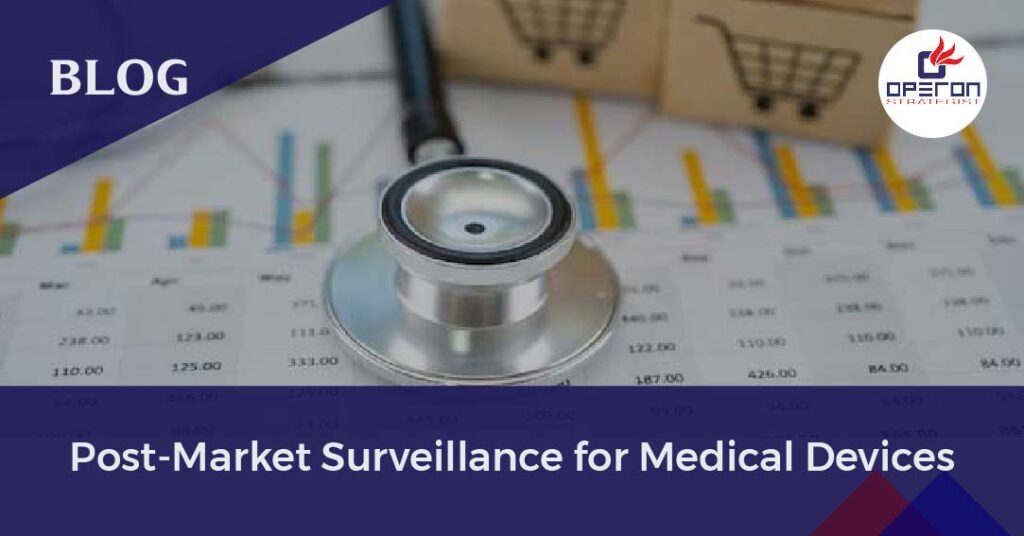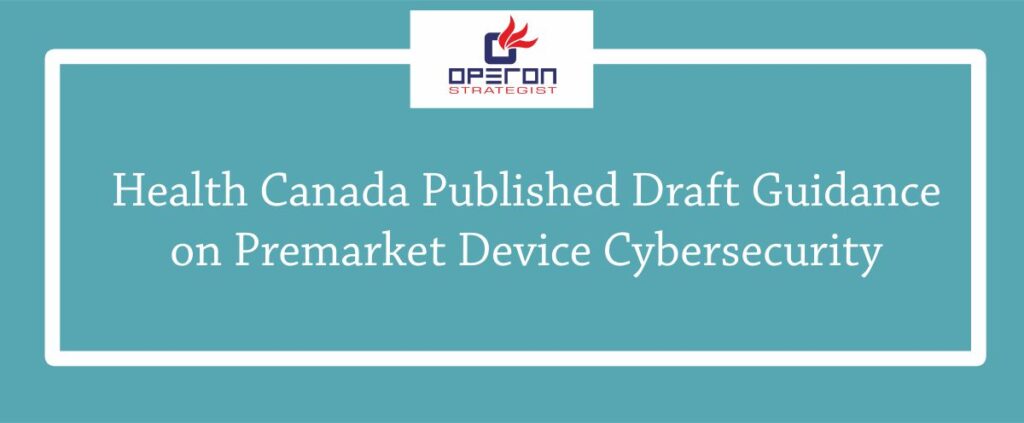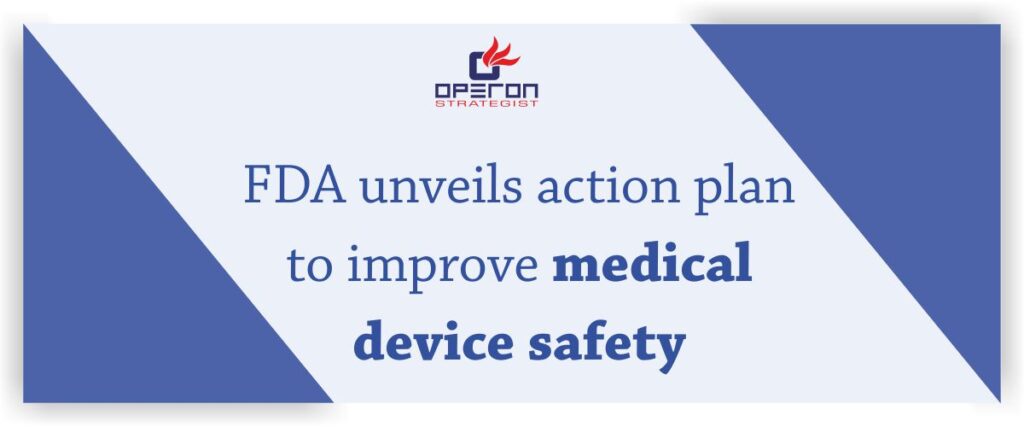Around the world, medical devices play a vital role in the diagnosis, treatment, cure, prevention, or mitigation of disease, disorder, or conditions. Medical devices can be instruments, apparatus, machines, implants, or other similar objects that professionals can use. Around the world, regulatory bodies or authorities regulate medical devices in terms of quality, safety, and efficacy. The work of regulatory authorities is not till the devices are marketed but continues even after that, known as post-market surveillance. The post-market surveillance is more or less the responsibility of the manufacturer. Regulatory bodies worldwide are working continuously to detect the defects of medical devices (if any) as early as possible. But still, there are some defects which come to attention once they are marketed and sold, used by the professionals and intended use. That’s why regulatory bodies came up with post-market surveillance so that even when the intended population uses the medical device, the manufacturer can rectify the defects to increase safety and give the user a pleasant experience.
What is post-market surveillance (PMS)?
PMS is the procedure that requires the manufacturers to monitor devices even after they are marketed and are within reach of common and professional people. PMS is a type of ongoing assessment of safety and effectiveness. The main aim of PMS is to keep an eye on the medical device after they are being used so that even if there is any complaint about the device, authorities can rectify that before it harms a large scale. The post-market surveillance depends on the data collected by the manufacturer, reports of incidents given by the people using the device etc.
To conduct post market surveillance manufacturers should develop PMS plan which is part of technical documentation.in EU manufacturers need to submit PSUR.
The main aims of post-market surveillance are:
- Analytically identifying the risks stirring during the usage practically.
- Monitoring the device’s performance when on the field.
- Identifying the device’s faults and safety issues which were not detected earlier.
- Updating the benefit-risk assessment continuously
- Taking necessary measures on the recalls.
- Detect the adverse event of the product marketing
- Compare the new product with already available products in the market
- Update the clinical guidelines
- Comply with regulations
- The information obtained from post-market surveillance is used to update the following:
- Benefit-risk determination
- Information on design and manufacturing
- Instructions of use, labelling
- Clinical evaluation report
- Summary of safety and clinical performance (if applicable)
- Technical documentation
- Detect the repeating trends
- Identify the corrective and protective actions
- Post-market surveillance of related devices (if applicable)
- Improvement in usability, performance and safety of the device
- Improve the management of risks associated
Types of Post-Market Surveillance : Proactive VS Reactive:
Proactive | Reactive |
Involves survey of customer | Complaints of customers |
Includes PMCF | User feedback (complaints excluded) |
Device tracking | Service report |
Product quality review | In-house testing |
Risk assessment periodically | Analysis of failure |
Focus group | Social media |
| Literature review |
| Regional or national device registry |
Steps to conduct the post-market surveillance:
Step 1 – PMS plan development:
- It includes an assessment of whether post-market surveillance is required, and if yes, then list out the requirements:
- Information on both serious and non-serious events
- Undesirable side-effects
- Technical information
- Feedback and complaints
- Information on similar medical devices
Step 2 – Plan implementation:
- Implementation is required after the plan is generated. It includes data collection, routings, approvals, follow-ups, reminders etc.
Step 3 – Report generation based on PMS findings:
- A variety of documents are generated during the PMS process. The PMS report shall contain a summary of all the outcomes and decisions used when the data on PMS was collected.
Step 4 – Perform the tasks related to vigilance:
- Vigilance helps in uncovering the adverse events which went unnoticed, enabling to prevent of such incidents in future
Step 5 – Forms management module:
- It includes forms such as CAPAs, complaints, NCs etc. A proper channel is required to manage the process for distribution, processing, completing and collecting forms.
Post-market surveillance in the US and Europe:
IN USA
- There are different sections in the USFDA under the code of federal regulations (CFR) that regulates post-market surveillance in the US.
- 21 CFR 822 – Consist of details on the post-market surveillance requirements in the USA.
- When post-market surveillance is necessary
- Documents to produce
- The period under which a manufacturer must react to an adverse event report.
- Healthcare professionals and consumers in the USA can use MedWatch to submit their complaints about adverse events.
- There is a database called MAUDE, which the FDA uses to house the reports of medical devices submitted to the FDA by manufacturers, importers and device user facilities or institutions and other reporters such as healthcare professionals, patients and consumers.
- The class of medical device decides the post-market surveillance necessity; the high-risk class medical devices require post-market surveillance, whereas class I medical devices can be exempted.
IN EUROPE
The European Union Annex III of Medical device regulation 2017/745 deals with post-market surveillance.
- Article 15 – People responsible for PMS
- Article 83 – Post-market surveillance plan for manufacturer
- Article 84 – Post-market surveillance plan
- Article 85 – Post-market surveillance report
- Article 86 – Periodic safety update report.
- Annex III – Technical documentation for post-market surveillance system
- The manufacturers need to perform the post-market clinical follow-up, and there must be a justification in case of the absence of PMCF.
- PMCF is part of the PMS, and PMCF depends on the device’s risk and novelty.
- Unlike in the USA in Europe, it is mandatory to have post-market surveillance reports for medical devices of all the classes.
Other than regulations of a country, standards such as ISO/TR 20416:2020 also cover medical devices – post-market surveillance for manufacturers. It is mainly used by the manufacturers of medical devices, as this standard is consistent and relevant to standards such as ISO 13485 and ISO 14971. This standard helps the manufacturers to understand how to collect and analyses the data, information on the feedback process etc.
The main aim of post-market surveillance is to ensure that the device, even when marketed, is safe for the intended population. It is an important process through which one can increase the benefit-risk ratio. With the post-market, one can improve the quality of the medical devices and make the user experience smoother. While conducting the Post market surveillance manufacturers take assistance from medical device regulatory consultant. As Medical device regulatory consultant we provide assistance to manufacturers in creating a file of technical documents or PSUR. So that they can easily conduct Post market surveillance for their devices.
- adminhttps://operonstrategist.com/author/admin-2/
- adminhttps://operonstrategist.com/author/admin-2/
- adminhttps://operonstrategist.com/author/admin-2/
- adminhttps://operonstrategist.com/author/admin-2/




